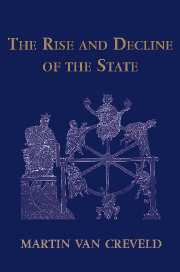Book contents
2 - The rise of the state: 1300 to 1648
Published online by Cambridge University Press: 26 June 2009
Summary
The West European feudal system that followed the collapse of the Carolingian empire – itself a short-lived attempt to impose order on the disorder resulting from the barbarian invasion that had destroyed Rome–was decentralized even by the standards of similar regimes elsewhere. Under feudalism, government was neither “public” nor concentrated in the hands of a single monarch or emperor; instead it was divided among a large number of unequal rulers who were related to each other by ties of fealty and who treated it as their private possession. However, in Western Europe the situation was made even more complicated by the exceptional position of the church.
Whereas, in most empires, the emperor's position was strengthened by the fact that he was descended either from god or from his prophet, in Christendom he was neither one nor the other. This was also true in Byzantium; but here at least there was the saving grace that there were no politically independent Greek Orthodox communities outside the empire's borders. However, in the West from about AD 1000 there were always important countries and regions such as Ireland, England, northern Spain, Scandinavia, and Poland which, though Christian and therefore subject to the authority of the pope, did not pay homage to the emperor.
To make things worse, the secular and religious capitals did not coincide. Byzantium and the Ottomans had Constantinople, the Inca Cuzco with its palaces and temples; but European emperors kept moving from one place to another.
- Type
- Chapter
- Information
- The Rise and Decline of the State , pp. 59 - 125Publisher: Cambridge University PressPrint publication year: 1999
- 1
- Cited by



